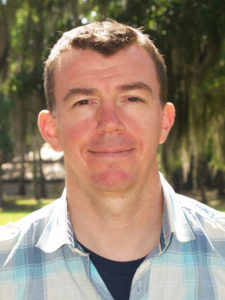Editor’s Note: UGA Skidaway Institute scientist Chris Marsay is scheduled to join an international team of scientists who will spend months on board a German ice breaker, deliberately frozen into the Arctic ice pack. Marsay and his colleagues will be studying the effects of climate change on the Arctic. Marsay is undergoing special training in Florida and send this update.
I am spending the week in Florida for training for my upcoming participation in the MOSAiC research cruise in the Arctic. Today, I am at Florida International University in Miami, learning some sample processing methods from our colleagues that are involved in the project. On Tuesday and Wednesday I will be undergoing survival at sea, first aid and fire-fighting training.

Chris Marsay
Today, I was learning how to collect and process samples for analysis of beryllium-7, which is an unstable isotope of the element beryllium that is produced by cosmic rays hitting other atoms in the atmosphere, and then becomes associated with aerosol particles that are deposited to the Earth’s surface. In this project we will be measuring the total amount of beryllium-7 in samples collected from sea ice, snow on top of the ice and the surface ocean, and we will also measure the amount on aerosol samples that we collect. Making these measurements will allow us to calculate the rate of atmospheric deposition (that is, the rate at which the isotope settles out of the atmosphere), which we can then apply to aerosol concentrations of other elements, such as iron, to turn concentrations into deposition rates. This is an important term for understanding the dynamics of these elements in the ocean.
For additional background information on the MOSAiC project, click here.


